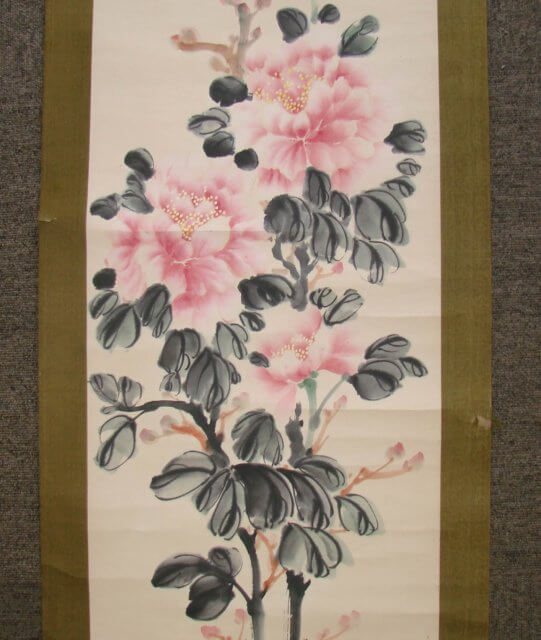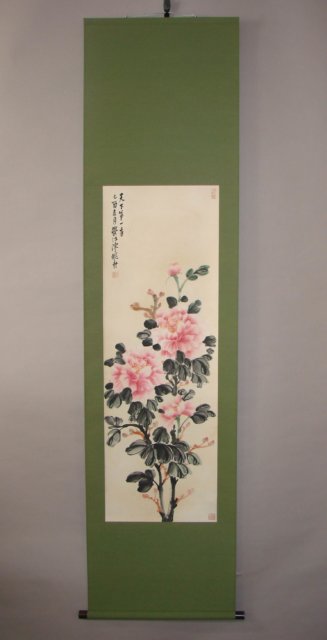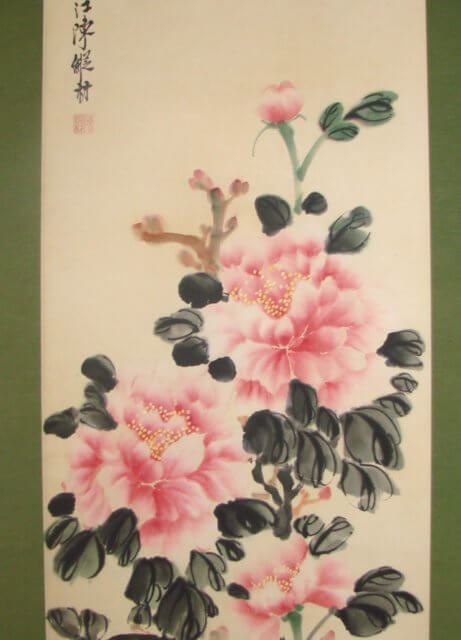Order of Remounting Hanging Scroll from the US: Roller Rod with Knobs Came off due to Torn Mounting Fabric!!
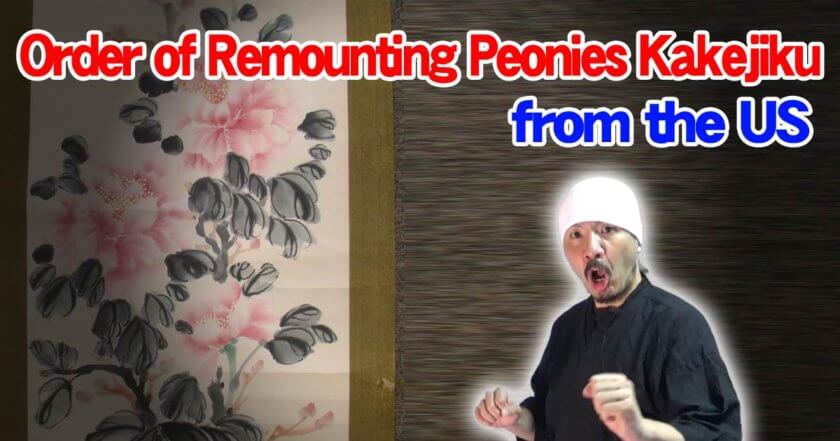
Order of remounting kakejiku hanging scroll from the US: Roller rod with knobs came off due to torn mounting fabric!!
Our company accepts any requests for the production/repair of Kakejiku hanging scrolls from not only Japan but also around the world. We have so far received inquiries from customers in various countries around the world and have satisfied their various needs.
Please kindly refer to the following excerpts of repair/production works ordered from around the world.
Order of Remounting Kakejiku Hanging Scroll from the US
We received a repair order from a woman living in the state of Texas, the US regarding her kakejiku hanging scroll.
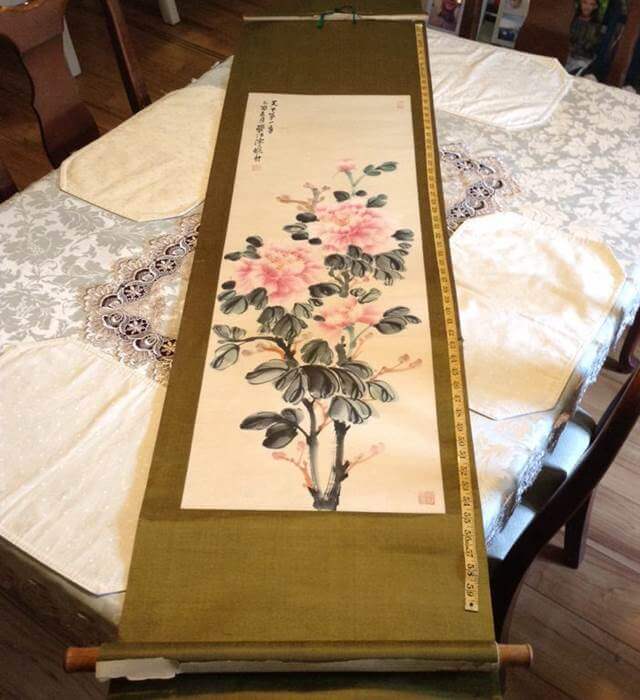
The woman who ordered the repair has been fond of the kakejiku so much, which was originally her mother’s possession. According to her, she had been unable to display the kakejiku due to the torn mounting fabric around both the wooden hanging rod fitting called ‘Hassō’ in the top part of the kakejiku and the wooden roller rod called ‘Jikubō’ in the bottom part. Regarding the parts name of the Kakejiku hanging scroll, please kindly refer to the drawing below.
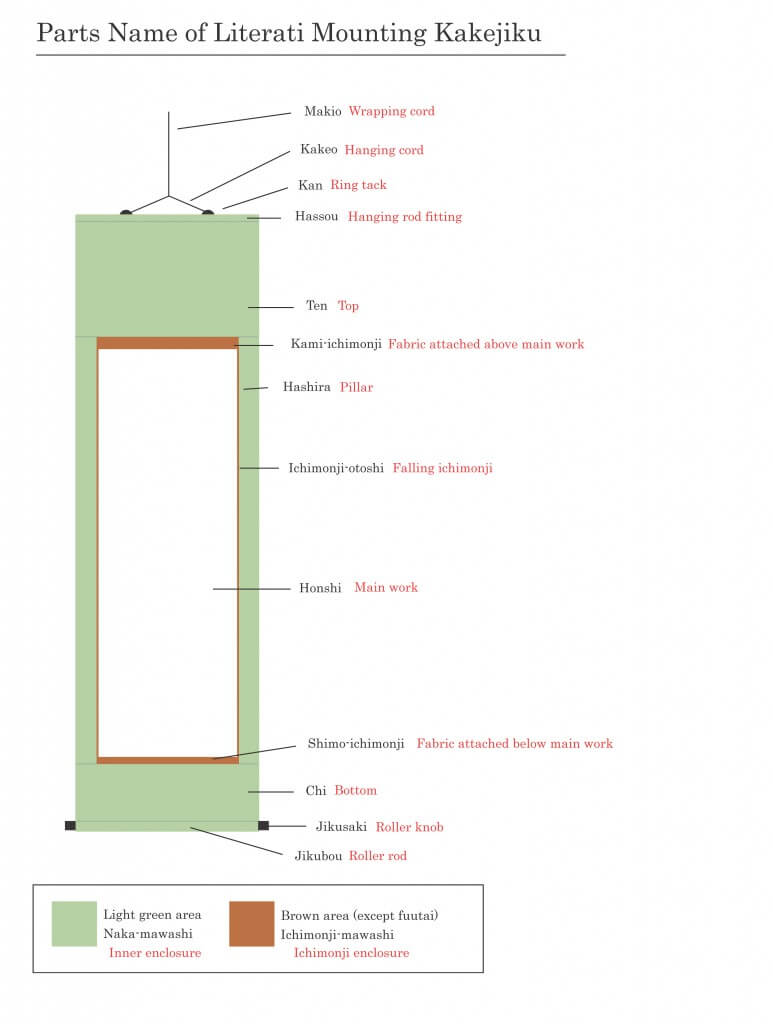
Following is the enlarged photograph of ‘Ten’, the top part of kakejiku. ’Kakeo’, a cord to hang kakejiku on the wall, and ‘Makio’, a cord to wrap up kakejiku, are usually attached to the wooden half-moon shaped stick called ‘Hassō (Hanging rod fitting)’. With the Hassō coming off due to the torn mounting fabric, it had been impossible to display her kakejiku.
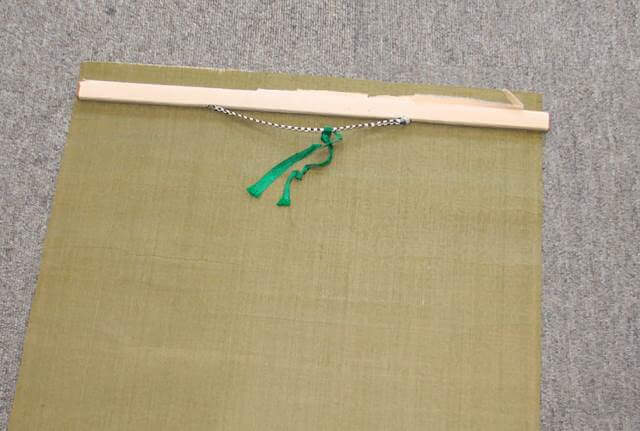
Hassō (Hanging rod fitting)
This is the enlarged photograph of the bottom part ‘Chi’. The mounting fabric around the wooden roller rod called ‘Jikubō’ used to wrap up kakejiku as well had been torn and the Jikubō had come off the kakejiku.
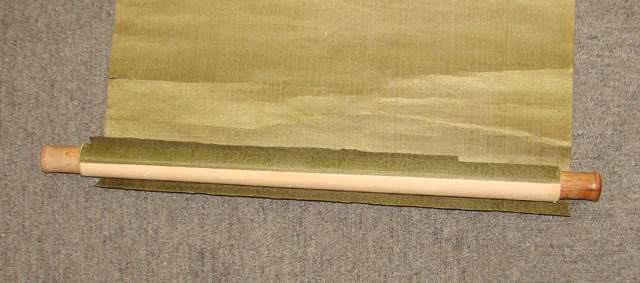
Jikubō (Roller rod)
There were considerably strong creases on the main work itself. Those severe creases must have clearly stood in the way of appreciating the work, though so beautiful peony flowers are depicted in the work.
The customer had asked us to submit a repair proposal to make the repaired one closer to the present appearance as best as possible, since she has been pleased with the taste of the color, pattern, and the likes of the present fabric. We accordingly offered three types of fabric patterns: Type A, B, and C.
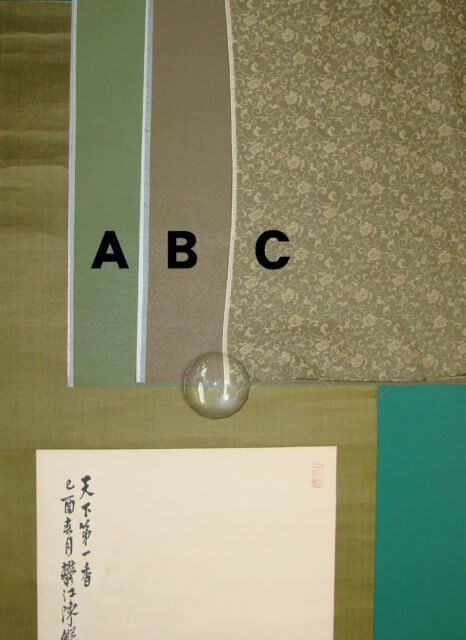
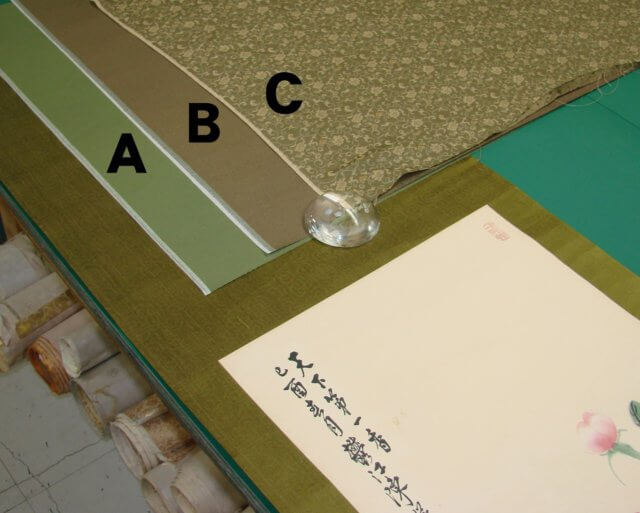
Our strength is that by using the Photoshop application we can create expected completion images, which, by the way, takes considerable time and effort. We are, nonetheless, a kind of addicted to the use of the application since the images created through the application has received great satisfaction from customers. Following is the expected completion image of the repaired kakejiku ordered from the woman in the US.
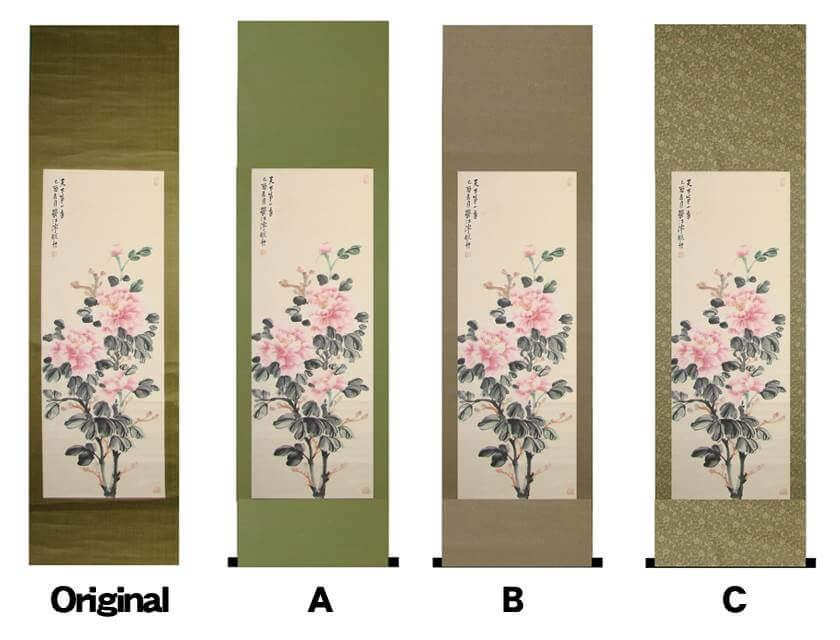
The customer chose type A. As she had requested us to remount the kakejiku as close as possible to the present form. Therefore, we tried to make the repaired one closer to the original with the similar mounting pattern and similar size.
Repair Process of Kakejiku ’Peonies’
Rough flow of remounting operation was as follows:
Dismantling kakejiku (Removing the old fabric, roller rod and others)
↓
Removing the old lining paper (Peeling off the old lining paper from the back of kakejiku)
↓
Remounting (Remounting into new kakejiku with the fabric the customer had chosen.)
Remounting Kakejiku Hanging Scroll Ordered from the US was Completed.
The remounting of the kakejiku hanging scroll was finally completed after the long repair process.
Although the original one had countless strong creases, the creases are now tremendously on the mend through the remounting process. Nothing will hinder the appreciation of the work anymore. The peony flowers appear to be refreshed, enabling us to feel the peony flowers’ reviving power of life.
After the repair was completed, we wanted to send it back as soon as possible. Owing to the effect of the COVID-19, however, as for the shipment bound for the US, we had not been able to use even EMS provided by the Japan Post Co., Ltd since the April of 2020. As we had not ever had any business transactions with DHL or FedEx, the delivery charge that they had newly proposed was extraordinarily high. We once thought we could not help but just wait and see how things would turn out. We, however, luckily could make a deal with a new carrier and be able to ship the repaired kakejiku within our budget, which we were really pleased with!!
After the customer received the repaired one, she sent us heart-warming feedback expressing her thought with a bit of excitement.
Dear Mr. Nomura,
Thank you so much for the beautiful work you did on the kakejiku! I love it! We did a special copper kiss metallic paint for the area where we will hang the newly restored kakejiku. I will email you an attached photo as soon as we hang it on the wall.
Again thank you and your staff for such excellent work. Please use me as a referral and please use the photo I send to show your work all the way in Plano, Texas, USA.
Have a wonderful holiday season, akemashite omedeto!!
This letter really shows how pleased she is, which is also a great pleasure for us. She secures s special place exclusively for the Kakejiku, just like ‘Tokonoma’, an alcove in a traditional Japanese-style room.
A few days later, she sent us the photograph showing the kakejiku displayed in that special place.
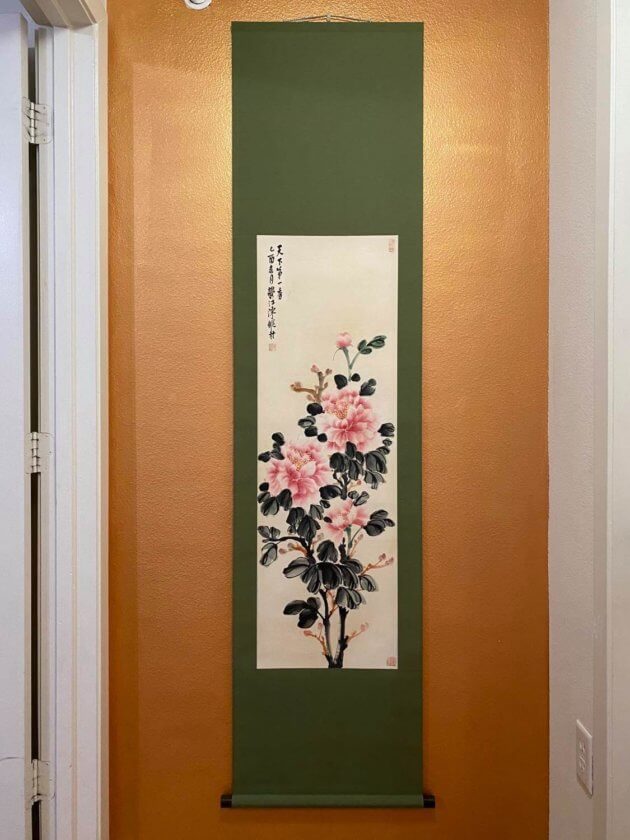
We are glad and deeply moved to see the kakejiku hanging scroll which was remounted by our company and is now displayed in such a special place filled with an outstanding sense of luxury.
Like this repair work ordered from the US, we will accept any inquiries regarding the repair or remounting of kakejiku hanging scrolls from around the world.
If you have any troubles with your kakejiku, please feel free to contact us.




